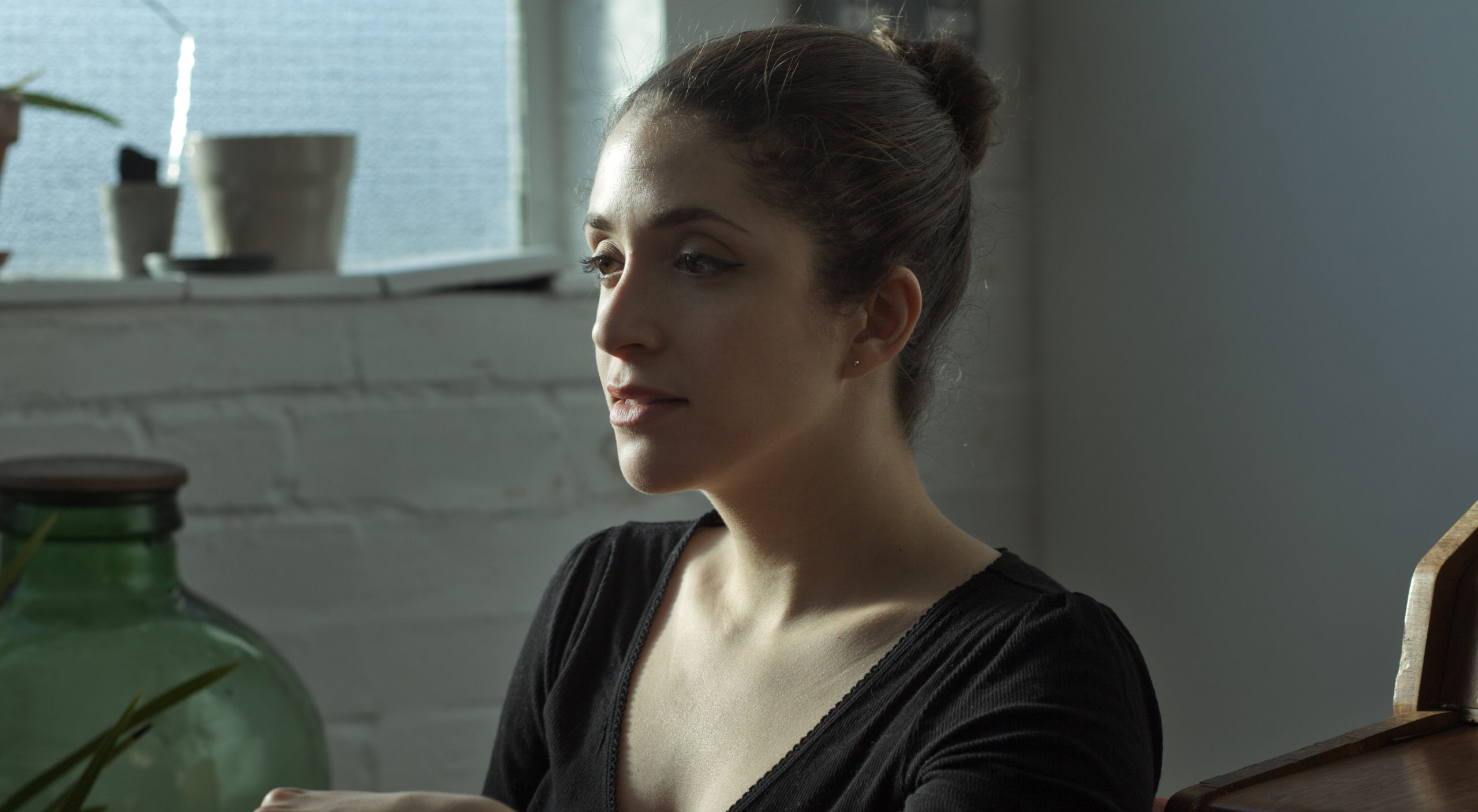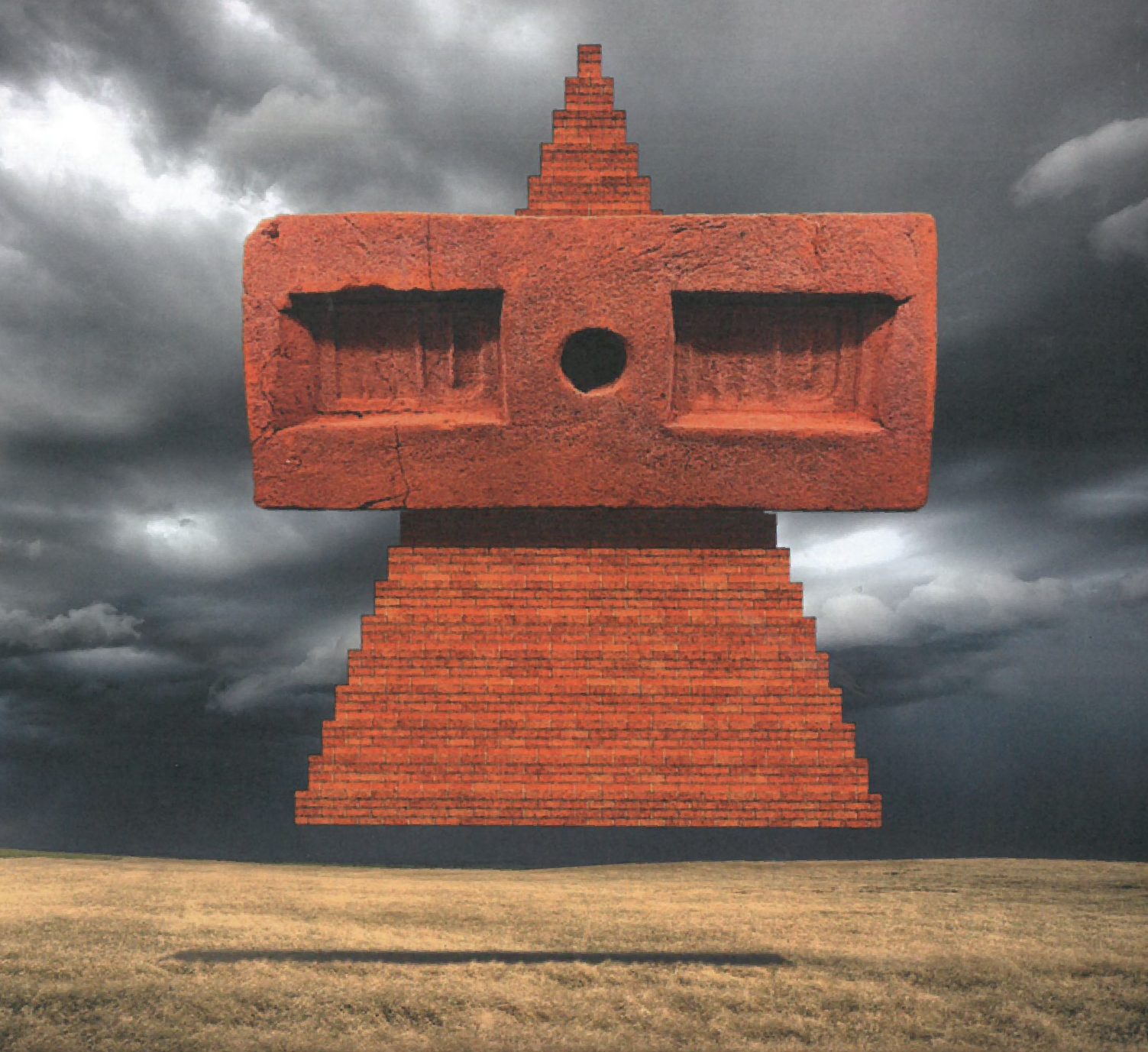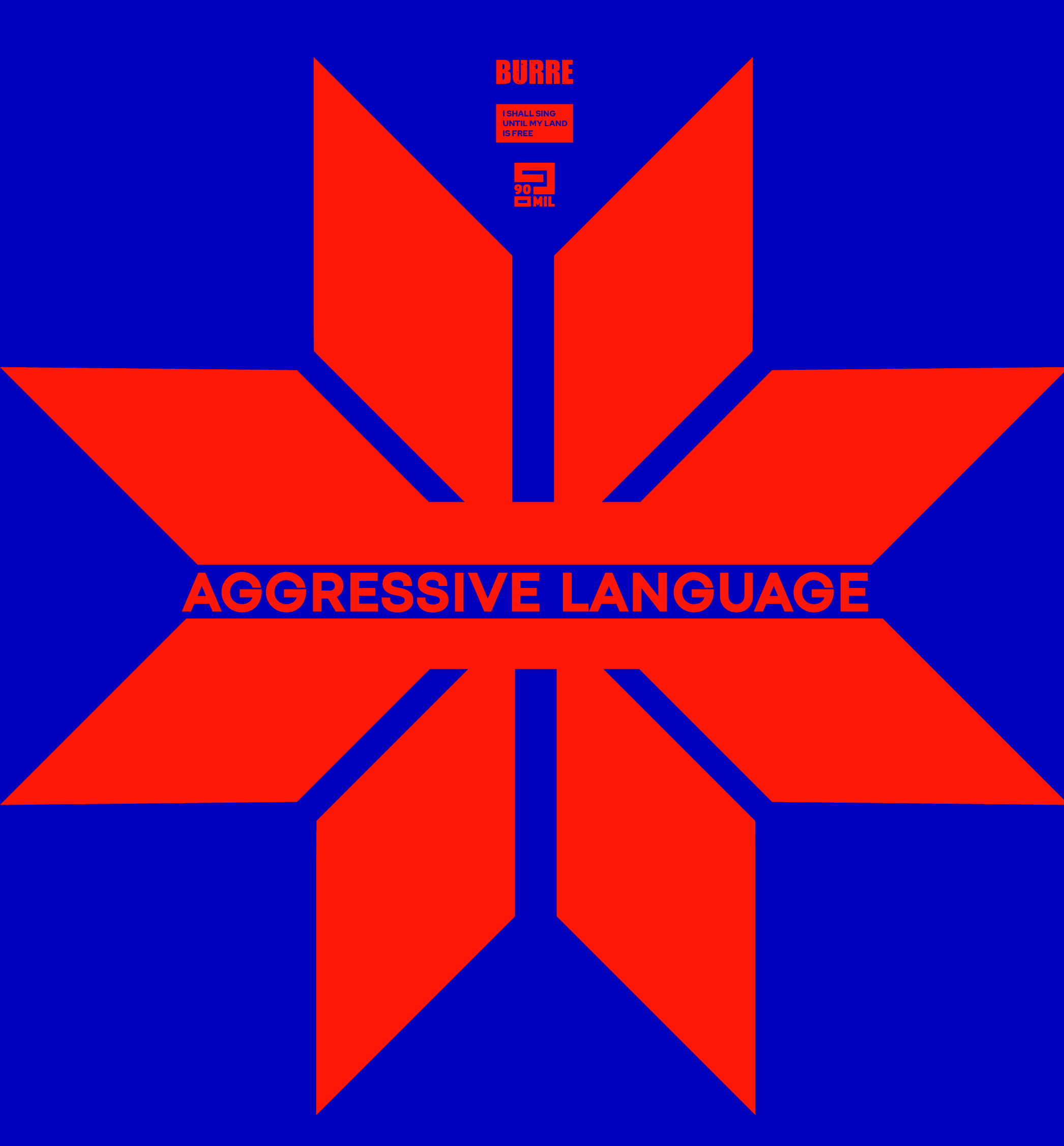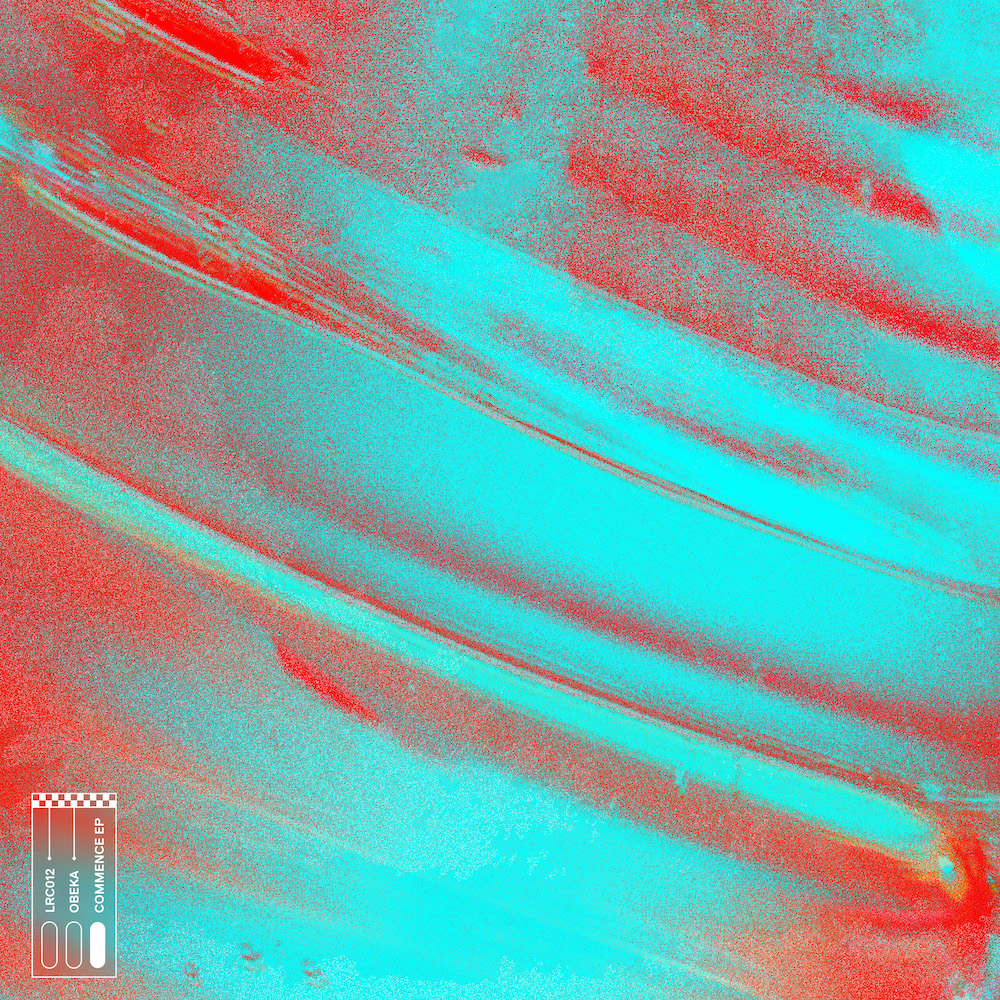Emilie Levienaise-Farrouch Interview And New Video

Award-winning French pianist and composer Emilie Levienaise-Farrouch grew up in Bordeaux, studying classical piano throughout her childhood before moving to London. Her debut album, 'Like Water Through The Sand', came out in November through FatCat's revitalised 130701 sub-label.
Written for piano, string quartet and electronics, the album displays Emilie's incredible talent for both arrangement and sound design. The title is taken from 'L'Amant' (The Lover) – a 1984 novel by cult writer Marguerite Duras – and refers to the construction and evolution of memories.
Earlier this week Emilie shared a powerful black and white video for album track 'Scale Of Volatility' which you really should watch below. Emilie says, "It came out a lot more emotional than we were anticipating. Every time someone sees it they start crying!"
We caught up with Emilie over coffee at a Hackney cafe to chat about the album…
I found the album title pretty intriguing, I’d never heard of Marguerite Duras before. I wondered if you could explain what it means to you?
Growing up, she’s someone that was always an important part of the cultural landscape in France. She grew up in Indochina in the colonies, but her take on the situation is quite interesting. Her father died and she was raised just by her mum. They were very much part of the poverty there, not these arrogant, separatist white attitudes. She grew up like a wild child, she didn’t have that many limits. She moved back to France before WWII, and it’s about that time she started writing. She’s a really distinct character with a strong personality, probably because of that lack of rules when growing up. She was really daring for her time. And for a long part of her life she was a heavy drinker. I always thought it was interesting, the difference between people like Bukowski and Hemingway who are still glorified for being heavy drinkers, and Duras who everyone was always looking down on.
Yeah. Double standards.
She was such an uncompromising woman, which made her a strange character.
I guess when a man drinks it’s romantic, when a woman does it’s tragic.
Especially in the ‘60s and ‘70s when she was in that phase. I thought it was interesting that she was so open about her drinking. ‘The Lover’ is such an interesting story because the morality of the book is always a bit on the edge. Then I realised she had written other novels about the same story, so it was interesting seeing how actually they were really different. The way she was looking back at that time of her life was changing so much from one book to another. We all have those events that are so important in our life, but depending how old we are, we look at them in a different manner. You never know with memories whether they’re the truth or not, because they’re just something that’s in your mind, and not facts. The element of fiction in her work really got me reflecting on how we think back on life, how important events change and evolve.
Did you have the title when you were recording or did it come afterwards?
There’s a point towards the end of the book with a specific sentence in French that really touched me. And I didn’t like the English translation, I didn’t think it did it justice! So I thought I would attempt to translate that sentence, and very quickly I realised it was one of the inspirations for the album. Not necessarily Duras’ life, but just how you process negative events, go from seeing them as bad to maybe elevating you somehow.
How do you feel that feeds into the music itself?
To me it’s these little elements or motifs that come back and are treated differently throughout the album. Little bits of strings that return, little piano motifs that are related. They’re symbolising the memories, the moments that you think back on with a different perspective depending on where you are with your life.
How long did it take from conception to actually finishing the album?
There were a few pieces that had been written for a while. Moments where I really started working on my own music, not as soundtrack pieces, just things or sounds that I wanted to look into. I already had three that were developed quite a bit, and then from the moment I was asked to start working on the album… maybe seven or eight months?
How different was it doing your first solo project, compared to composing for film when you’ve got images and a director to work with?
Very different. Interesting because you get to do whatever you want, but you also have to trust yourself a lot more.
Is that liberating or scary?
It’s really good to explore and have all that freedom. But you’re making all the decisions, so you have to really trust yourself that you’re making the right ones. Whereas with a director, sometimes they make points that you wouldn’t have seen yourself. But sometimes when you’re working on a film it’s sad when you have a really good idea and then it doesn’t make the cut. When you do your own music you have the freedom to explore that idea as much as you want, not as much as someone else wants.
Do you find yourself thinking about music in a visual way even when you don’t have a film to score to?
No, I think about it in terms of emotions. But not like a linear narrative, I don’t imagine characters or location or anything like that. Every song is more like a personal state of mind than a story. But then in the arc of the album, hopefully there’s a feeling of growth, of growing up, with different themes evolving.
I know you worked at Bleep for a bit, and there’s obviously a big electronic aspect to the album. What were your early electronic influences, when did it first come on your radar?
As a teenager, my first time getting obsessed with something – not just dancing because it’s on the radio – was Bjork’s ‘Homogenic’. When that came out I was done with the Spice Girls and Britney Spears. It was just mind-blowing. Growing up she was such a role model, like, “She’s so daring!” It changes the dialogue when you’re so young, you’ve got Britney on one hand and then Bjork on the other, and you’re like, “Wow, I can also be all that stuff!”
How about this year, what electronic stuff have you been listening to?
I’m a big fan of Pye Corner Audio, he’s got a new one out. It feels very now, but also there's this sense of time-travel into the ‘70s. I really like everything on Ghost Box. Oh, and Arca’s album is really good, it’s mental. I think there’s a real fluidity in the music I listen to that mixes electronic aspects and acoustic ones at the same time.
I wanted to ask about the Capracara remix of 'Strelka', how did that come about?
Yeah! So Johnny [Burnip] is a long time friend, and he had this other project… it mixes beautiful lush strings from ‘70s films and layers it with more disco-y music. So I always remembered he’d done that, and as soon as I started working on the album I thought he could bring quite an interesting twist to things.
Would you tell me about the album artwork?
That’s by Teresa Zelenkova. I’ve known her for years and always been a big fan of her work, so I was able to ask, “Can I use this photo for my album?” I thought it was such a striking image. I don’t know how it relates… maybe it’s the danger. I wanted something that was a bit confusing and not too sweet.
It’s very pretty but it’s also got a hardness to it.
That’s exactly it. The image is almost abstract, people go, “Oh, I didn’t even realise it was crocodiles!” So when you realise what they are…
What about the videos? The one for ‘Tulsi’ definitely reminded me of something Ghost Box might do.
It’s got this whole retro feel, all archive footage obviously. It was made by the Brain Wash collective. I just gave them stems, not the whole song, and they synchronised these really dynamic effects with various aspects of the music, so it’s got all these layers.
It works really well with the themes of the album because you’ve got the same images repeating, but then they’re interspersed with different images to the first time.
I liked the idea of going through from microscopic images to bigger animals and then finishing on man.
Finally, I wanted to ask about Hackney, I saw you’ve done a couple of projects to do with the area.
I’m a local, I’ve lived around here for six years. First it was Dalston – a few years back before it got mental – and now Hackney Wick. It’s a very interesting area, it has the luxury of being really quiet in the daytime. It’s really nice to walk around beautiful warehouses and empty streets while we’re 25 minutes from Oxford Circus. It’s really great in terms of affordable arts space, that’s so valuable. People don’t understand how important that is and how it’s going to disappear. As a French person, I didn’t want to move to London for Buckingham Palace, but for this type of young creativity. To me that’s such an important part of London’s identity. And then there’s the nightlife aspect. It’s such a juxtaposition, the quiet sounds of daytime and the birds on the canal and Victoria Park… and then bass escaping from warehouses until 7 in the morning and drunk people talking shit in the street. The project I did tried to capture that identity as a sound, it’s about the relationship between sound and space.
The things you find exciting about London, is it not the same in France?
Not to the same degree, especially in terms of music. You have a very vibrant music scene. I came here to study nine years ago, and because of my interest in electronic music I had no desire to go to a traditional conservatoire. I just wanted to learn how the music industry works, I was more interested in pop music, and I didn’t have many options to do that in France, especially not in Bordeaux. It was either Paris or London, and London was so much more exciting and daring. A bit trashier, a bit more fun. So I like Hackney, and I hope it’s still going to be here in ten years time!
'Like Water Through The Sand' is out now on 130701. Follow Emilie Levienaise-Farrouch on Facebook HERE.


















Must Reads
David Holmes – Humanity As An Act Of Resistance in three chapters
As a nation, the Irish have always had a profound relationship with the people of Palestine
Rotterdam – A City which Bounces Back
The Dutch city is in a state of constant revival
Going Remote.
Home swapping as a lifestyle choice
Trending track
Vels d’Èter
Glass Isle
Shop NowDreaming
Timothy Clerkin
Shop Now